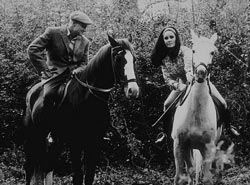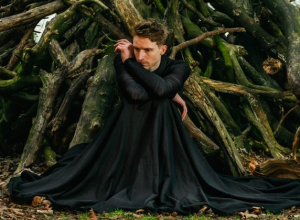The appropriate response to Myra Breckinridge is wide-eyed bafflement; anybody with anything resembling taste will recognize it as an awful movie within ten minutes. Released in 1970 and under practically Soviet-style repression until now, it is clumsily edited, horribly acted, and practically plotless. It is lascivious without being provocative, and it did damage to the public images of both Mae West and John Huston. No movie has worked harder to try one ironic gag after another and fail every single time; it is idiocy disguised as camp. Yet there's something transcendently misbegotten about Myra Breckinridge that makes it worth studying; the differences between the excellent book and a horrible movie has a few interesting things to say about Hollywood as it stumbled from the '60s into the '70s.The film is based on Gore Vidal's bestselling 1968 novel, which gave us Myra as a magnificently over-the-top symbol of changing sexual mores, greed, revenge, Hollywood, and how they all intersect. In the hands of director Michael Sarne, the story became a messy sex farce; Vidal stepped away from the project, and for good reason. In the book, Myra romanticizes the great movies of the 1930s, arguing, in fact, that it was the best decade ever for movies. This inspires Sarne to raid the 20th Century Fox vault and cram in seemingly dozens of clips from Laurel & Hardy and Shirley Temple films, sometimes ironically, but mostly sitting there like a bad joke told at a dinner party. (It may be that Myra's sole usefulness is that it inspired a similar idea in the HBO TV series Dream On, actually done well.)
Continue reading: Myra Breckinridge Review








![Luke De-Sciscio talks to us about having the courage to be yourself, forgiving that which is outside of one's control and following whims [EXCLUSIVE] Luke De-Sciscio talks to us about having the courage to be yourself, forgiving that which is outside of one's control and following whims [EXCLUSIVE]](https://images.contactmusic.com/images/home/homepage/luke-de-sciscio-abof-a.jpg)
